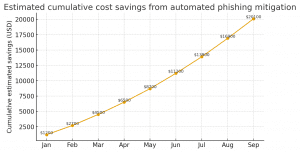Vulnerability & Patch Roundup: September 2025 Highlights
In the rapidly evolving landscape of website security, staying current with vulnerability disclosures, patches, and attack trends is crucial for protecting digital assets. This comprehensive update covers the most significant security vulnerabilities and patches disclosed in September 2025, highlighting their impact and the best practices to mitigate risks.
Introduction to Vulnerability Awareness
Vulnerability reports and responsible disclosures constitute the foundation of proactive website security. Automated attacks targeting exposed software vulnerabilities remain a leading cause of website compromises globally. According to recent data, over 70% of cyberattacks utilize known vulnerabilities where patches are available but not applied (CVE Details).
Understanding these vulnerabilities and promptly implementing patches help minimize attack surfaces and reduce breach likelihood.
Key Vulnerabilities Reported in September 2025
Below is a summary of notable vulnerabilities disclosed during the month and their potential impact on websites and web applications.
1. SQL Injection Flaws in Popular WordPress Plugins
- Description: Multiple widely-used WordPress plugins were found vulnerable to SQL Injection (SQLi) attacks, allowing attackers to manipulate database queries and potentially extract sensitive data.
- Impact: Exposure of customer data, unauthorized administrative access.
- Mitigation: Update affected plugins immediately to patched versions; implement Web Application Firewall (WAF) rules.
2. Cross-Site Scripting (XSS) Vulnerabilities
- Description: Several plugins and themes displayed improper input sanitization leading to XSS vulnerabilities, risking user session hijacking.
- Impact: User credential theft, phishing, content injection.
- Mitigation: Upgrade affected software; use Content Security Policy (CSP) headers.
3. Remote Code Execution (RCE) in CMS Components
- Description: Critical RCE vulnerabilities were discovered in certain CMS core components allowing attackers to execute arbitrary code remotely.
- Impact: Full site compromise, malware injection.
- Mitigation: Apply security patches immediately; perform regular security scans.
Real-World Case Study: Consequences of Ignored Patches
In August 2025, a major e-commerce site suffered a data breach due to an unpatched SQLi vulnerability in a third-party WordPress plugin. Over 500,000 user records were leaked, resulting in regulatory fines and loss of customer trust. This incident underscores the critical need for vigilance in patch management.
Updated Research and Statistics
- Patch Management Efficiency: Organizations that implement automated patch management reduce their exposure window by 60% on average (Gartner, 2025).
- Attack Vectors: SQL Injection and Cross-Site Scripting remain among the top three attack vectors globally, accounting for nearly 40% of web application attacks (OWASP Top 10, 2025).
- Automated Attack Growth: Automated exploit attempts have increased by 25% year-over-year targeting known vulnerabilities (Verizon DBIR 2025).
Best Practices for Website Security and Patch Management
To defend against vulnerabilities and reduce risk exposure, website administrators should:
- Monitor and Subscribe: Stay updated with security advisories and vulnerability databases such as CVE, NVD, and vendor-specific bulletins.
- Implement Regular Patching: Prioritize critical updates and automate patch deployment where possible.
- Leverage Security Tools: Use Web Application Firewalls (WAF), malware scanners, and intrusion detection systems.
- Conduct Security Audits: Periodically review code and server configurations to detect weaknesses.
- Educate Teams: Train development and operations teams on secure coding practices and attack awareness.
Conclusion
September 2025 reaffirms that vulnerability and patch management remain essential pillars of website security. With an increase in automated attacks exploiting known vulnerabilities, website owners must stay vigilant and proactive in applying security updates.
By integrating best practices and leveraging the latest security insights, organizations can significantly reduce their risk of compromise and maintain trusted online environments.



